Lucio Fontana Concetto spaziale, Attese 1960 Waterpaint on canvas. 93 x 138 cm (36 5/8 x 54 3/8 in). Signed, titled, inscribed and with the artist’s fingerprint ‘l. fontana concetto spaziale ATTESE 1+1-SSAO’ on the reverse.
Provenance Marlborough Galleria d’Art, Roma Galerie Stutz, Pulver & Co., Vaduz Collection Andy Warhol New York Private Collection, Milan Exhibited Minneapolis, Walker Art Centre, Lucio Fontana The Spatial Concept of Art, 6 January– 13 February 1966 Austin, University of Texas Museum, Lucio Fontana 27 February–27 March 1966, Buenos Aires, Centro de Artes Visuales del Instituto Torcuato di Tella, Lucio Fontana 26 July–18 August 1966 Literature Lucio Fontana The Spatial Concept of Art, exh. cat., Walker Art Centre, Minneapolis, 1966 Lucio Fontana exh. cat., Centro de Artes Visuales del Istituto Torcuato di Tella, Buenos Aires, 1966 E. Crispolti, Lucio Fontana catalogue raisonné, vol. I, Brussels, 1974, p. 90 no. 60 T1 (illustrated) E. Crispolti, Lucio Fontana catalogo generale, vol. I, Milan, 1986, p. 311 no. 60 T1 (illustrated) E. Crispolti, Catalogo ragionato di sculture, dipinti, ambientazioni, Milan, 2006. no. 60 T1. p. 482 Catalogue Essay “With an artist as self-conscious as Andy Warhol the acquisition of a work of art counted almost as much as the making of one. It was a deliberate gesture, and not one made for the sake of posterity; it symbolized both an homage and a kind of apprenticeship to his fellow painters.” HENRY GELDZAHLER curator and art historian, on Warhol’s ownership of this lot. Concetto Spaziale, Attese, executed in 1960, is an important work in the oeuvre of Lucio Fontana that has been an undeniable highlight in Andy Warhol’s collection until his death in 1987. It is an outstanding example of the work to come out of the Spazialismo (Spatialism) movement, founded by the artist in 1947. Six carefully remeditated cuts run across the thinly painted monochromic canvas, emphasising the physicality of this work. It is charged with energy of the physical act of the artist slashing the surface with the knife. This physical act or gesture became the central idea of Spatialism, to the extent that it figured in the movement’s ‘First Spatial manifesto’: “it doesn’t matter to us if a gesture, once accomplished, lives for a second or a millennium, for we are convinced that, having accomplished it, it is eternal” (in E. Crispolti and R. Siligato, eds., Lucio Fontana Milan, 1998, p. 118). Through the use of gesture, Fontana was in fact one of the first artists to perceive art as a performance. In the ‘Technical Manifesto of Spatialism’, Fontana elaborates on Spatialism’s ambitions: “Painted canvas no longer makes sense… What is needed… is a change in both essence and form. It is necessary to go beyond the painting, sculpture and poetry… In the praise of this transformation in the nature of man, we abandon the use of known forms of art and move towards the development of an art upon the unity of space and time” (in M. Gooding, Abstract Art, London, 2001, p. 88). This constituted a significant challenge to traditional Western painting. Fontana transformed painting from its conventional flat surface to it being a three-dimensional object. To emphasise this step, Fontana, from 1949 on, used a generic title for his works – Concetti spaziali (Spatial Concepts) – which suggests the experience of infinite space not limited by perception. The present lot is an important example of a sub-category of the Concetti spaziali, alongside Buchi (holes) and Pietre (stones), called Tagli (slashes), which the artist began making in the mid-1950s. The six slashes in the canvas open up the dark space behind the object suggesting metaphysical, spiritual references. As exemplified in the present lot, Fontana usually uses off-white, pale surfaces, against which the cuts stand out clearly and draw the viewer’s gaze into the unknown space beyond. The Tagli have been the subject of many interpretations but are often considered to relate to violence or to carry a sexual charge, which, in the case of the present lot with its pristine surface violated so dramatically, is perhaps all the more possible. As the artist himself points out, “the Spatial
Lucio Fontana Concetto spaziale, Attese 1960 Waterpaint on canvas. 93 x 138 cm (36 5/8 x 54 3/8 in). Signed, titled, inscribed and with the artist’s fingerprint ‘l. fontana concetto spaziale ATTESE 1+1-SSAO’ on the reverse.
Provenance Marlborough Galleria d’Art, Roma Galerie Stutz, Pulver & Co., Vaduz Collection Andy Warhol New York Private Collection, Milan Exhibited Minneapolis, Walker Art Centre, Lucio Fontana The Spatial Concept of Art, 6 January– 13 February 1966 Austin, University of Texas Museum, Lucio Fontana 27 February–27 March 1966, Buenos Aires, Centro de Artes Visuales del Instituto Torcuato di Tella, Lucio Fontana 26 July–18 August 1966 Literature Lucio Fontana The Spatial Concept of Art, exh. cat., Walker Art Centre, Minneapolis, 1966 Lucio Fontana exh. cat., Centro de Artes Visuales del Istituto Torcuato di Tella, Buenos Aires, 1966 E. Crispolti, Lucio Fontana catalogue raisonné, vol. I, Brussels, 1974, p. 90 no. 60 T1 (illustrated) E. Crispolti, Lucio Fontana catalogo generale, vol. I, Milan, 1986, p. 311 no. 60 T1 (illustrated) E. Crispolti, Catalogo ragionato di sculture, dipinti, ambientazioni, Milan, 2006. no. 60 T1. p. 482 Catalogue Essay “With an artist as self-conscious as Andy Warhol the acquisition of a work of art counted almost as much as the making of one. It was a deliberate gesture, and not one made for the sake of posterity; it symbolized both an homage and a kind of apprenticeship to his fellow painters.” HENRY GELDZAHLER curator and art historian, on Warhol’s ownership of this lot. Concetto Spaziale, Attese, executed in 1960, is an important work in the oeuvre of Lucio Fontana that has been an undeniable highlight in Andy Warhol’s collection until his death in 1987. It is an outstanding example of the work to come out of the Spazialismo (Spatialism) movement, founded by the artist in 1947. Six carefully remeditated cuts run across the thinly painted monochromic canvas, emphasising the physicality of this work. It is charged with energy of the physical act of the artist slashing the surface with the knife. This physical act or gesture became the central idea of Spatialism, to the extent that it figured in the movement’s ‘First Spatial manifesto’: “it doesn’t matter to us if a gesture, once accomplished, lives for a second or a millennium, for we are convinced that, having accomplished it, it is eternal” (in E. Crispolti and R. Siligato, eds., Lucio Fontana Milan, 1998, p. 118). Through the use of gesture, Fontana was in fact one of the first artists to perceive art as a performance. In the ‘Technical Manifesto of Spatialism’, Fontana elaborates on Spatialism’s ambitions: “Painted canvas no longer makes sense… What is needed… is a change in both essence and form. It is necessary to go beyond the painting, sculpture and poetry… In the praise of this transformation in the nature of man, we abandon the use of known forms of art and move towards the development of an art upon the unity of space and time” (in M. Gooding, Abstract Art, London, 2001, p. 88). This constituted a significant challenge to traditional Western painting. Fontana transformed painting from its conventional flat surface to it being a three-dimensional object. To emphasise this step, Fontana, from 1949 on, used a generic title for his works – Concetti spaziali (Spatial Concepts) – which suggests the experience of infinite space not limited by perception. The present lot is an important example of a sub-category of the Concetti spaziali, alongside Buchi (holes) and Pietre (stones), called Tagli (slashes), which the artist began making in the mid-1950s. The six slashes in the canvas open up the dark space behind the object suggesting metaphysical, spiritual references. As exemplified in the present lot, Fontana usually uses off-white, pale surfaces, against which the cuts stand out clearly and draw the viewer’s gaze into the unknown space beyond. The Tagli have been the subject of many interpretations but are often considered to relate to violence or to carry a sexual charge, which, in the case of the present lot with its pristine surface violated so dramatically, is perhaps all the more possible. As the artist himself points out, “the Spatial
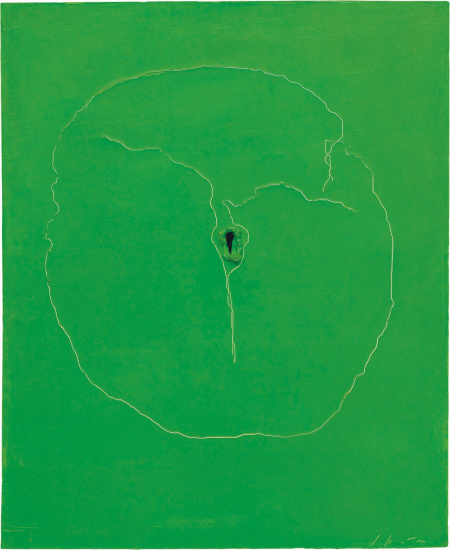
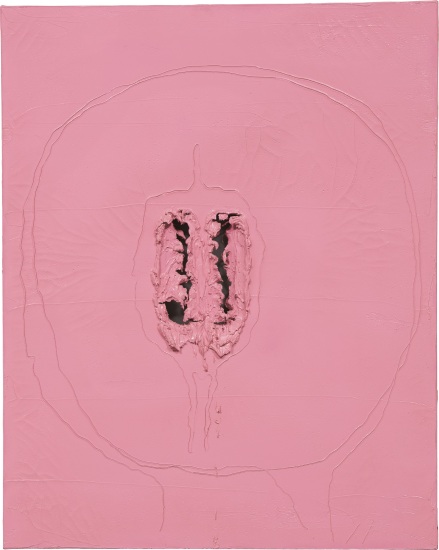
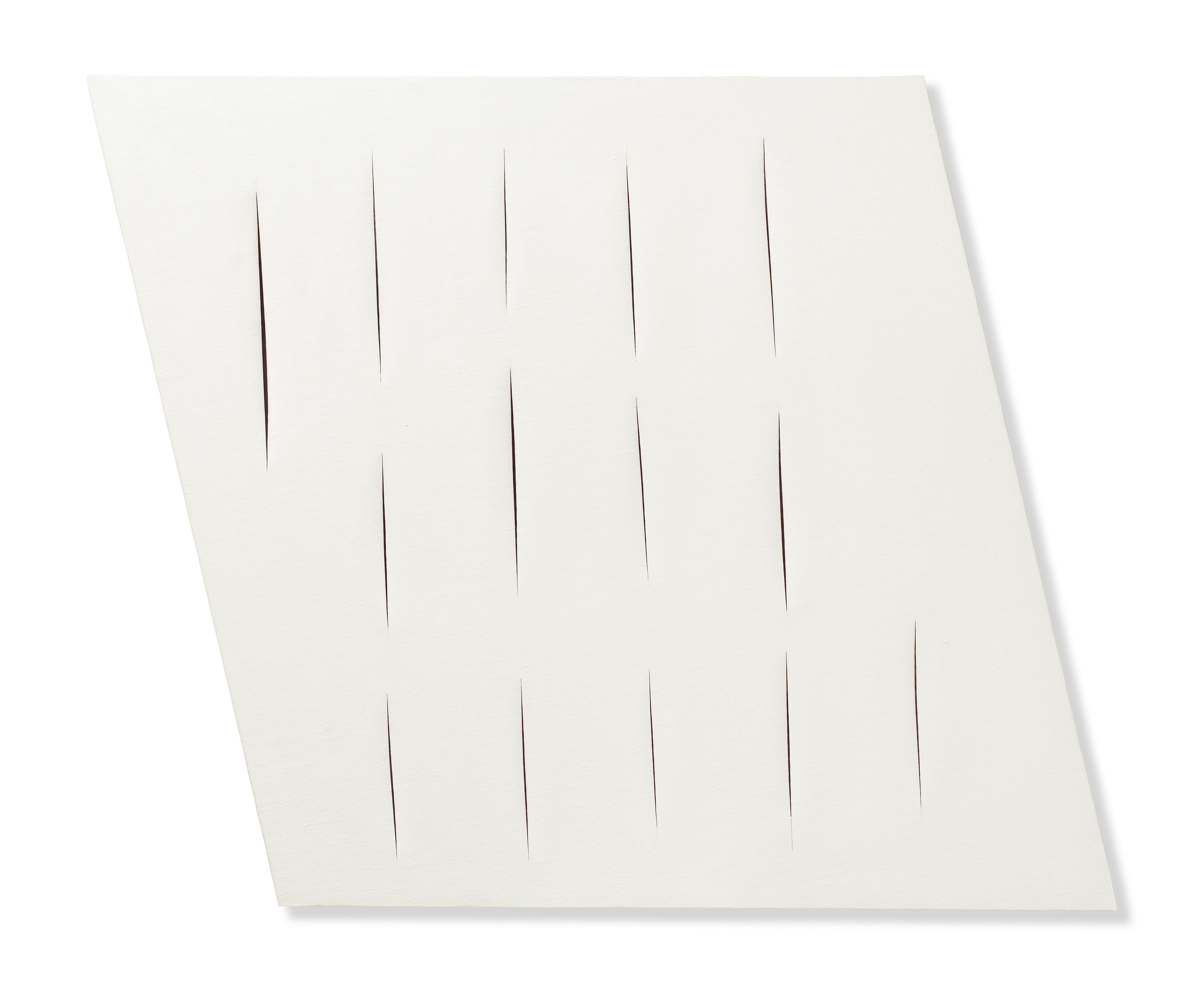
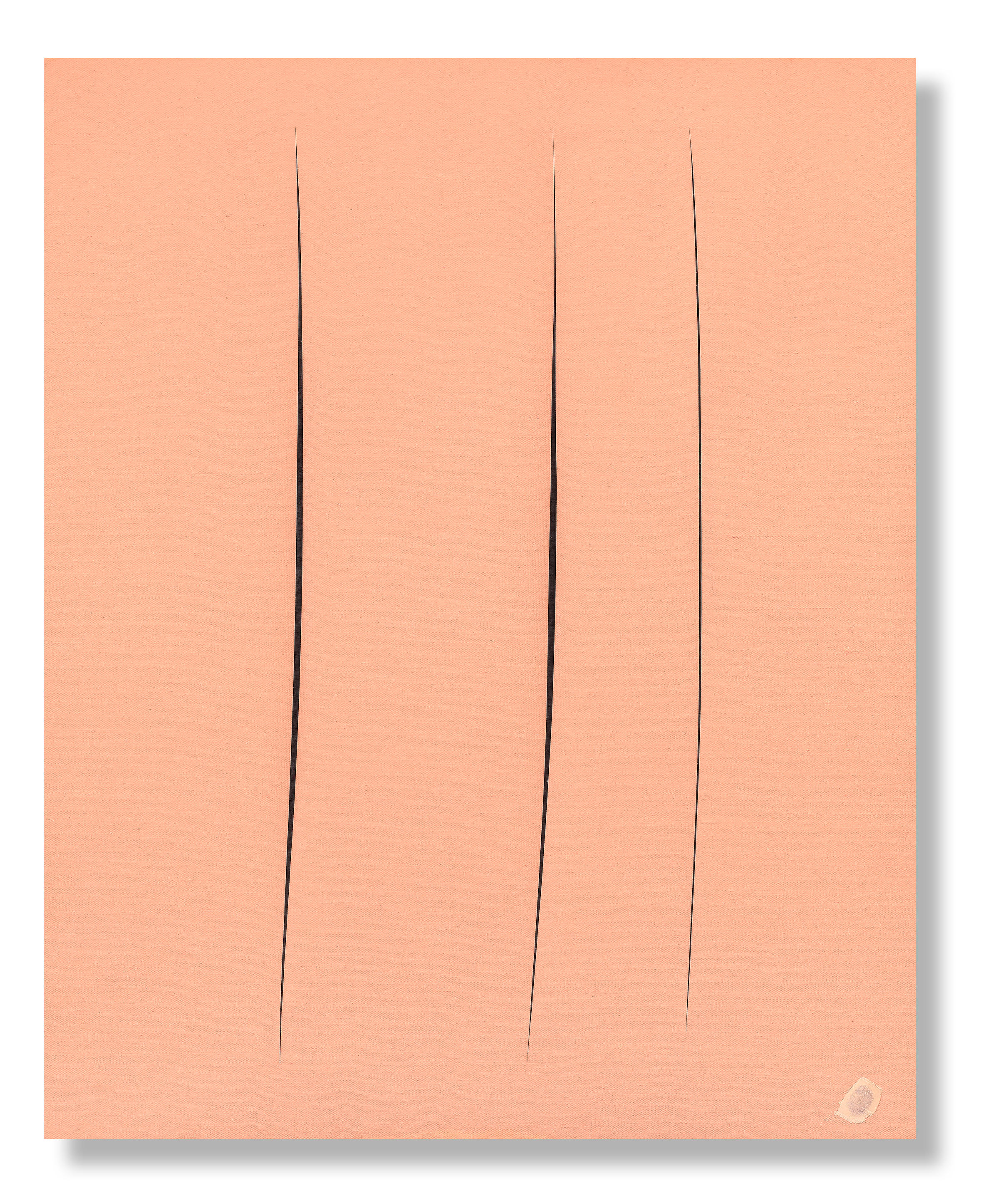
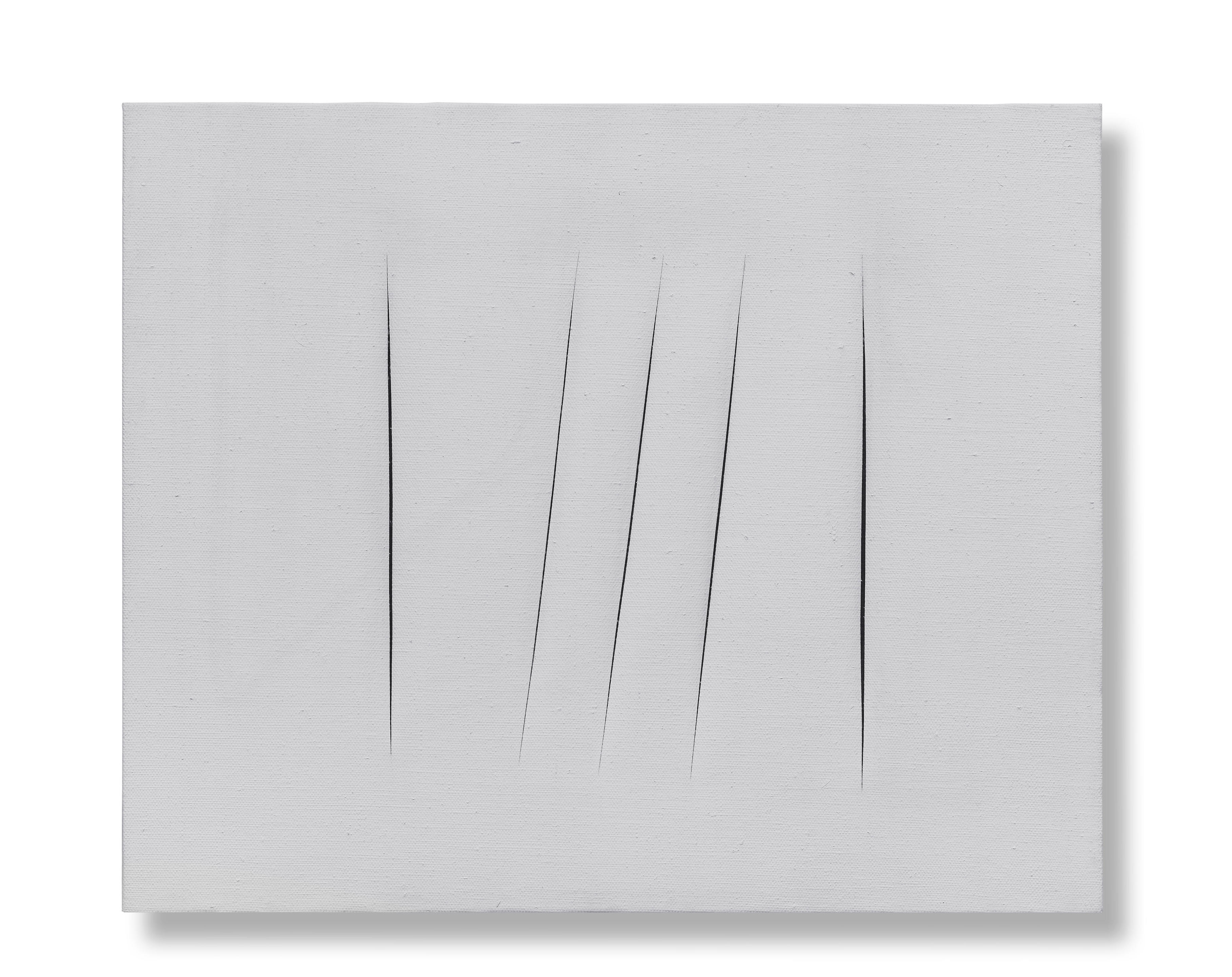



.jpg)
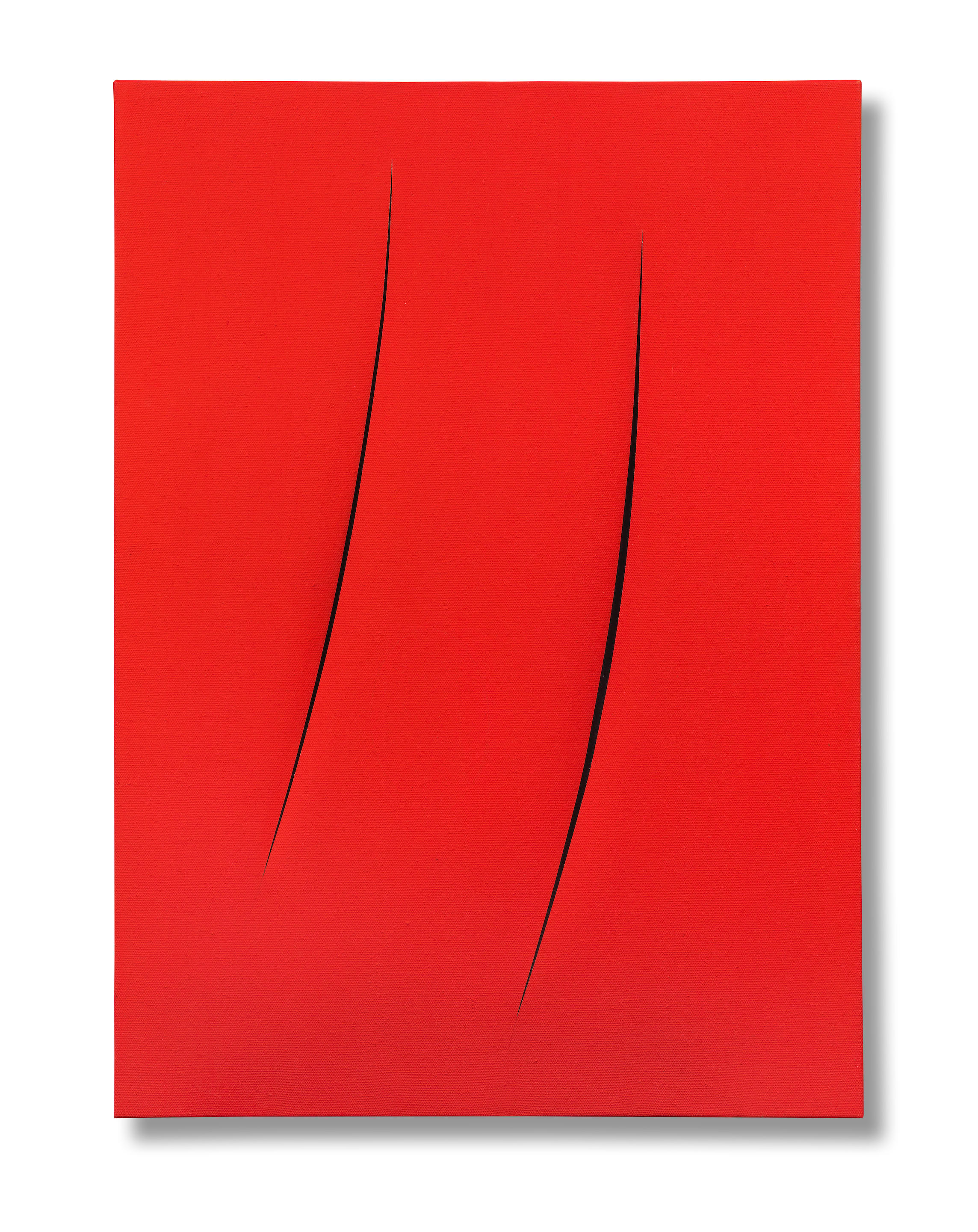
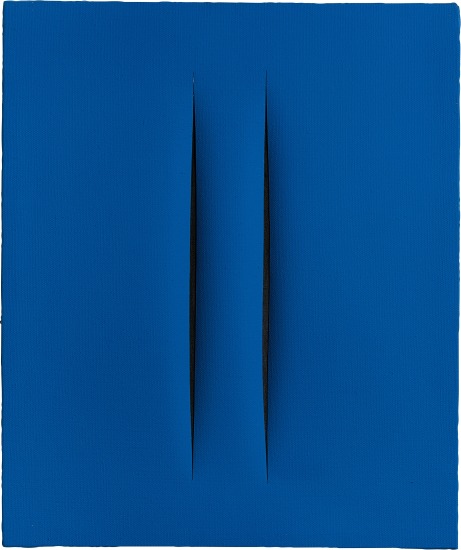
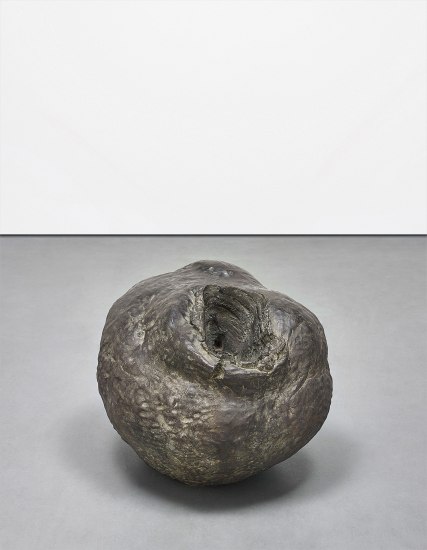

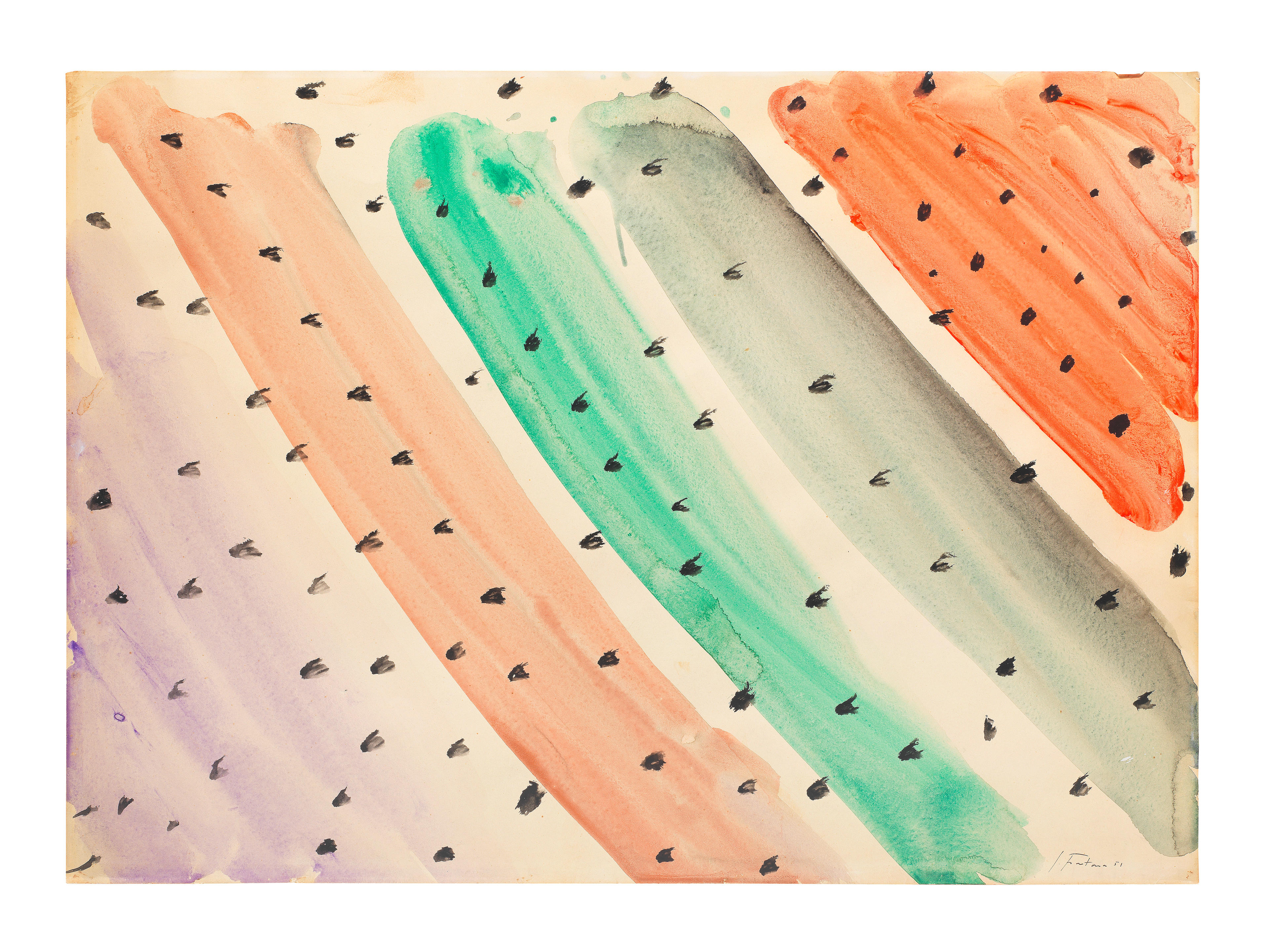
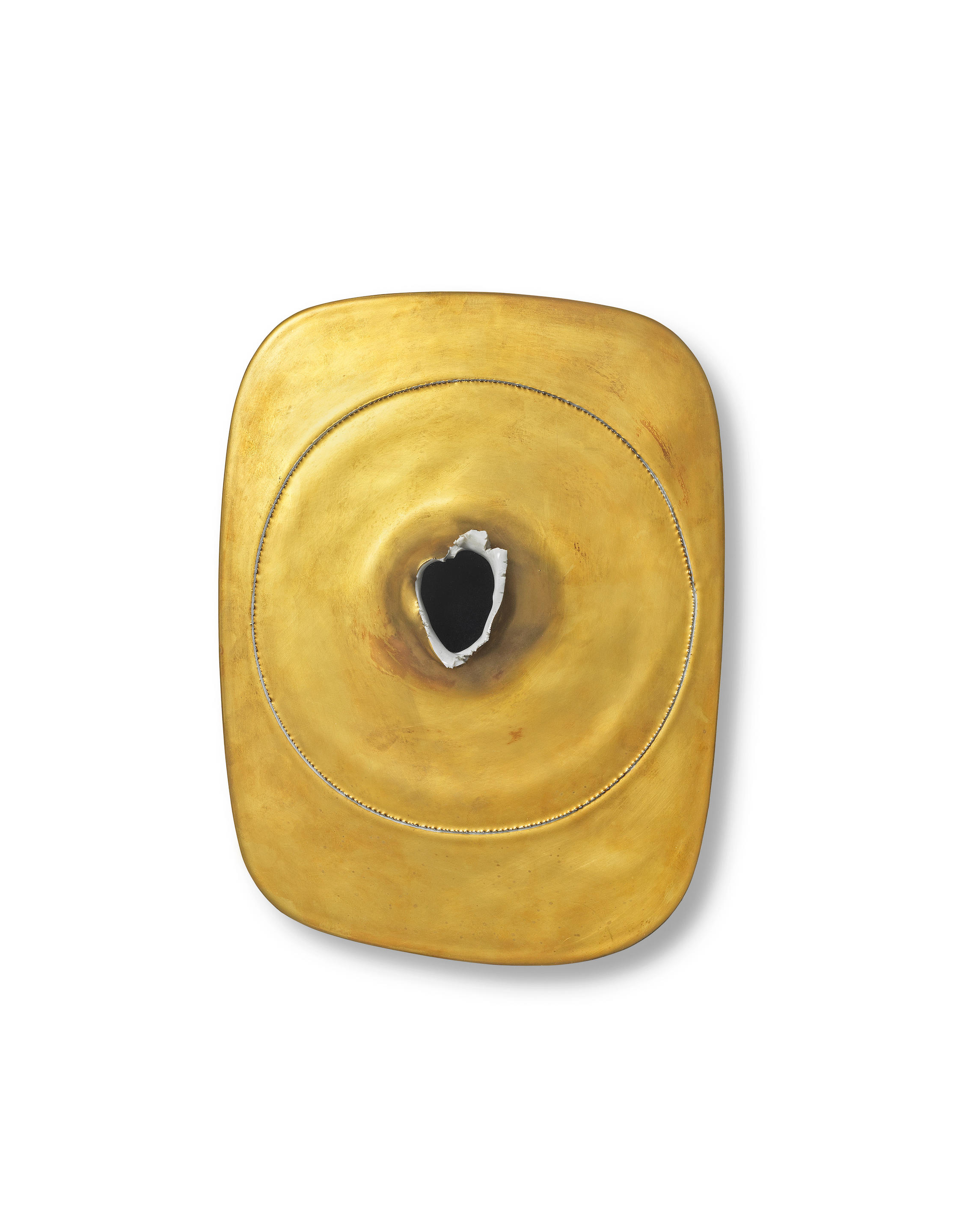
Testen Sie LotSearch und seine Premium-Features 7 Tage - ohne Kosten!
Lassen Sie sich automatisch über neue Objekte in kommenden Auktionen benachrichtigen.
Suchauftrag anlegen